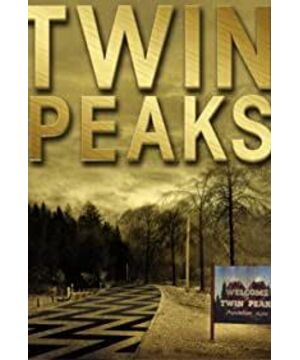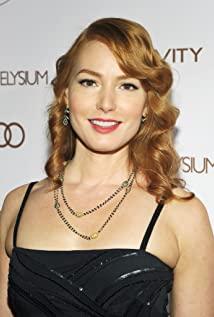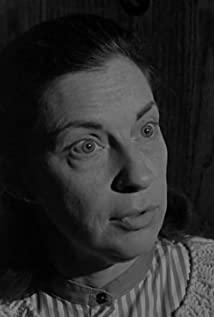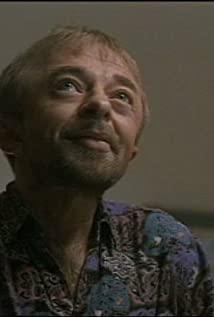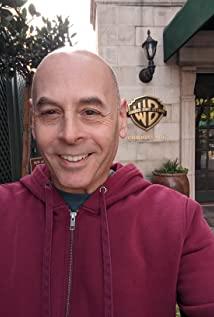Kant defined "pure aesthetics" as "aesthetics independent of any functionality, morality, and politics", which refers to the sacred human creativity that is natural, free, and free from the constraints of the social environment. At first, this kind of aesthetics was only used to describe works of art (poems, paintings, classical music, etc.), but I think David Lynch, as a director, benefited from his multiple artistic identities and was infinitely close to this "Kant" Style aesthetics". Just as the CEO of Showtime said in an interview: "Compared to a mere location noun,'Shuangfeng Town' has become an adjective." The audience can find many expressions common to Lynch's movies from "Shuangfeng Town". And aesthetic elements: dreams, avatars, supernatural, and even the use of red curtains, stage, and television. This small town with a population of only 51,201 has the characteristics of "uncanny" under Lynch's lens. Psychologist Freud once discussed the psychological state of "weird" in detail. He believes that although "weird" produces the ultimate effect of "fear", its roots are not due to human beings' unfamiliarity with what they see. feel. On the contrary, the "weird" arises from the "disharmonious cognition" of human beings with something that is secretly hidden in the interior and that they are very familiar with. Normally, human reason will have a repressive effect on internal secret and familiar desires. When this familiarity recurs and challenges rational repression, "weird" emotions may be produced and make people feel restless. In the play, FBI agent Cooper came to Twin Peaks to investigate the murder of Laura, but in his dream he entered the mysterious red room. A dwarf in a red suit and a strange accent told him a riddle about the murderer. Clues. Similar dreams appeared repeatedly, and then in Laura's secret diary that was found, Cooper discovered that Laura had the same dream as him before she was killed. In the prequel "Shuangfeng Town: Walking with Fire", the film tracks the activities of Laura in the last few days of her life. From the age of 16, Laura endured the assault of Bob, the ghost clone of her father Leland. Under the dual effects of drug-induced hallucinations and emotional collapse, Laura is gradually unable to distinguish Leland, who usually cares about her, from the brutal and possessive Bob, and can't distinguish reality from dreams. Every time she screams, it seems exaggerated or even annoying, but it has actually become an important expression of this "weird" aesthetics. In addition to being a filmmaker, Lynch is also a painter, stage designer, and architect. These identities complement each other. It constitutes a unique Lynch style similar to abstract expressionism. His use of color and shape is largely reflected in the unique architectural structure in the film: the baroque style located in Hollywood in "Inland Empire" The villa, the long narrow and strangely arranged three windows outside the Madison villa in "The Night of the Monsters", the living room where Dorothy is covered with carpet and surrounded by furniture in "Blue Velvet"... The Red Room, more than any building in Lynch's movie, has the possibility of being drawn away as pure aesthetics. First of all, the arrangement of large red curtains and the red suits worn by dwarfs create a kind of visual "weird". Secondly, the red curtains enclose the space in a closed form, but in fact it is a "false closed form." Compared with solid building materials such as bricks, tiles and cement, the soft texture of cloth creates hope and conditions for people to escape. However, after breaking through the curtains again and again, Cooper found himself still confined in the same place, recurring and unable to escape. . In addition to the red room, red curtains also appeared in the movie version of the bar stage, "Blue Velvet" and "Mulholland Road" clubs. As the agents entered the town, we initially wanted to find out who killed Laura, but with the development of the plot, finding the truth no longer seemed to be the only purpose, so we happily enjoyed being in the black forest and the red room. The feeling of wandering. The black forest, which is always shrouded in mist, has buried Lara's necklace, but it also conceals sin, desire, and supernatural power. The clues about the owls were always remembered by Cooper, but were swallowed by the Black Forest. The waterfall in front of the Northern Hotel and the fan in the attic of Laura's house are always surging, perpetually moving, and disturbed every time the close-ups are made. From this perspective, Lynch relied on artistic expressions to challenge and shake the audience’s traditional viewing experience in the 1990s. He refused to use logically rigorous plot arrangements to give the audience a brief escape from real life (escapism). , Which also provides space for the audience to form a personal understanding of the film. This aesthetic choice is non-functional, because it does not directly serve narrative; it does not accept the judgment of moral standards or the constraints of political issues, that is, "depoliticization." Genre Mixture and Black Preference In 1990, the American television network was filled with all kinds of similar soap operas, and "Shuangfeng Town" was born under such a big environment. It seems difficult to have a clear judgment about its type. It combines various elements such as detective, youth, soap opera, comedy, supernatural, film noir and so on. First of all, television networks in the 1990s were still in doubt about the possibility of supernatural or science fiction dramas. , And Lynch’s experimental genre mix adds uncertainty to the audience’s acceptance of the show. However, facts have proved that "Shuangfeng Town" later became a phenomenal work in the history of American television, and its success has also affected many television and even film works. For example, the recent Netflix hit "Thirteen Causes" also started with the bizarre death of female student Hannah, and step by step revealed that everyone around her was responsible for her death. This reminds me of the phrase Bobby yelled out at Laura’s funeral: "Each of us is the murderer who killed her!" Entertainment Weekly also commented, and Cooper saw it in the mirror at the end of the second season. The face of the evil spirit Bob stimulates the nerves of the audience, causing people to ask every time they see a detective character in the future: "What is his'Lucifer' side?" The use of Lynch’s absurd comedy in the play can be Seen as one of the means to achieve "depoliticization". Cooper would use the Tibetan method of throwing stones to identify the killer when the case was in a deadlock. The operation of the timber mill did not reflect the intention of conflict between industry and nature, but only provided the background for the story line of Catherine and Josie. As a big capitalist, Ben Horne was frustrated and played the role of a general who fought the "Civil War". Even after he regained his mind, he insisted on propagating environmentalism and ecology. It was also a catwalk disturbed by a pine weasel in an absurd manner. ending. Whether it is TV or film, it is not difficult to find Lynch’s preference for film noir. Lynch himself once admitted that Billy Wild’s "Sunset Boulevard" (1950) is his favorite. In "Twin Peaks", Lynch personally played Cooper's friend and hearing-impaired detective Gordon Cole. The name "Gordon Cole" comes from the Paramount movie in "Sunset Boulevard" A small person in the company. In the film version of the prequel, the detective who disappeared before Laura's case also took the same surname "Desmond" as the heroine in "Sunset Boulevard". For another example, Evelyn, the hostess James met after leaving Twin Peaks, like the femme fatale Phyllis in "Double Compensation" (1944), planned how to lure lovers to help them complete the perfect crime of killing their husbands. . Geographical Edge and Psychological Meditation Lynch’s films, except for the early "Rubber Head" (1977) with Philadelphia as the background and "The Elephant Man" (1980) with London as the background, mostly focus on Los Angeles. In contrast, "Shuangfeng Town" can be described as a geographical exception in Lynch's works. Shuangfeng Town is located in the "Pacific Northwest" (pacific northwest), this is not a very "American" place that we often use through various media channels. The interaction between geographic marginalization and media marginalization has made the region in a forgotten position in mainstream American culture. Although there is no clear geographical or administrative boundary, the "Pacific Northwest" generally refers to the northwest corner of the United States and the southwest corner of Canada. For the United States, it usually includes Washington, Oregon, Idaho, and Montana. west. Because these areas are blocked by the Pacific Ocean to the west and the Rocky Mountains to the east, they are often neglected in economic, cultural, and social development. Therefore, they have gradually become "base areas" for independent filmmakers to express their resistance. The barren land is still loved by directors, either as a natural backing for minimalism, or as a weapon against political alienation and social isolation. For example, the American independent female director Kelly Rechard once said that she hopes that people will pay more attention to the marginal areas of Oregon and Montana through her films, and most of her works such as "Old Dreams" (2006) , "Wendy and Lucy" (2008), and "A Certain Woman" (2016) all use these geographical margins to reflect the failed communication between people after the distorted social discourse, and the suppressed desire under the cold air accomplices to go south. Unlike the homeopathic fusion, "Shuangfeng Town" strives to constantly break the balance in the silence and calm, and then continue to lose control. The dream is out of control, the mind is out of control, but neither the audience nor the characters in the play can distinguish the source of this sense of loss of control. In fact, the fringe often appears in Lynch’s works, although in most cases it does not appear in the direct form of Shuangfeng Town. After settling in Los Angeles, this southern city became a stage for Lynch to create mysterious dreams. Although movies are often full of seemingly "cliche" sunshine, highways, and movie studios, they also darken the city. Alleys, street corners, and garbage dumps are brought to the audience, that is, the most overlooked places hidden in the bustle. Many times, people associate regional marginalization with industrial marginalization, and Lynch, who has a strong personal style, has been constantly pushed to the edge of the movie market. At first, "Rubber Head" was sent to the selection team of the first Sundance Film Festival but was not selected. According to Lory Smith, one of the planners in charge of the selection at the time, in his book "Party in a Box" ( Party in a Box) recalled that the film selection team members were unable to accept Lynch's surreal performance, but now it seems that the decision made them miss a genius. After becoming famous, Lynch has gained a large number of fans and made friends with top-tier casts like Laura Dunn, but he still struggles on the edge of the market, such as the famous "cow incident." In 2006, Lynch took a cow named "Georgia" and sat near Hollywood's Sunset Boulevard to promote the Oscar nomination for Laura Dunn, who had just starred in "Inland Empire". Lynch said that he did not have the huge amount of money needed for advertising, and hoped to attract attention through anti-traditional means, but Laura Enn was not nominated in the end. Restriction is another thrust to stimulate creativity. Meditation, for Lynch, provides a good foundation for this kind of creativity. In 1973, Lynch started transcendental meditation twice a day. He believed that meditation had accumulated infinite energy, creativity and deep inner happiness for him. Meditation, as a mental technique, may have helped Lynch to enter a state of "flow" in film and other artistic creations, that is, a state of high excitement and concentration. His collaborator Mark Foss Te also expressed his affirmation of Lynch's subconscious artistic behavior. On the other hand, I think Lynch’s aesthetics seems to encourage viewers to enter their personal “flow of mind” that they share with these products. A foreign friend once said to me: "Lynchism is anti-learning (unlearning)." The concept of "anti-learning" emphasizes reflecting on one's own learning and thinking mode in learning. From "Shuangfeng Town" on American TV From the moment the Internet caused a sensation, David Lynch had already subtly influenced the creative methods of countless TV and filmmakers. Fire Walk with Me Fire Walk with Me In the red room, Laura said to Cooper, "We'll see you in 25 years." Now David Lynch is back and the tree wants to be quiet but the wind keeps on meditation), he believes that meditation has accumulated infinite energy, creativity and deep inner happiness for him. Meditation, as a mental technique, may have helped Lynch to enter a state of "flow" in film and other artistic creations, that is, a state of high excitement and concentration. His collaborator Mark Foss Te also expressed his affirmation of Lynch's artistic behavior derived from his subconscious mind. On the other hand, I think Lynch’s aesthetics seems to encourage viewers to enter their personal “flow of mind” that they share with these products. A foreign friend once said to me: "Lynchism is anti-learning (unlearning)." The concept of "anti-learning" emphasizes reflecting on one's own learning and thinking mode in learning. From "Shuangfeng Town" on American TV From the moment the Internet caused a sensation, David Lynch had already subtly influenced the creative methods of countless TV and filmmakers. Fire Walk with Me Fire Walk with Me In the red room, Laura said to Cooper, "We'll see you in 25 years." Now David Lynch is back and the tree wants to be quiet but the wind keeps on meditation), he believes that meditation has accumulated infinite energy, creativity and deep inner happiness for him. Meditation, as a mental technique, may have helped Lynch to enter a state of "flow" in film and other artistic creations, that is, a state of high excitement and concentration. His collaborator Mark Foss Te also expressed his affirmation of Lynch's artistic behavior derived from his subconscious mind. On the other hand, I think Lynch’s aesthetics seems to encourage viewers to enter their personal “flow of mind” that they share with these products. A foreign friend once said to me: "Lynchism is anti-learning (unlearning)." The concept of "anti-learning" emphasizes reflecting on one's own learning and thinking mode in learning. From "Shuangfeng Town" on American TV From the moment the Internet caused a sensation, David Lynch had already subtly influenced the creative methods of countless TV and filmmakers. Fire Walk with Me Fire Walk with Me In the red room, Laura said to Cooper, "We'll see you in 25 years." Now David Lynch is back and the tree wants to be quiet but the wind keeps on
View more about Twin Peaks reviews


